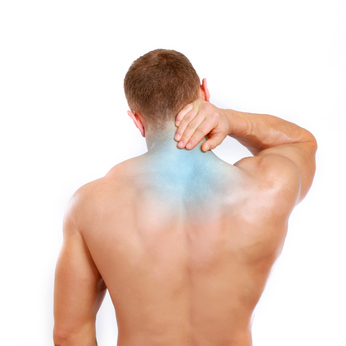Five Tips For Releasing Trigger Points
Author: Julie Donnelly
 Have you ever had a pain in one area, rubbed another place on your body, and felt the pain melt away? If so, you’ve experienced the result of “trigger point therapy.”
Have you ever had a pain in one area, rubbed another place on your body, and felt the pain melt away? If so, you’ve experienced the result of “trigger point therapy.”
A trigger point is technically an area of hyperirritability in a muscle that may refer pain &/or numbness to another area. In other words, it is a “knot” in the muscle fibers and it prevents muscle fibers from lengthening to their longest length. The shortened fibers are therefore pulling on the insertion, limiting range of motion, and weakening the entire muscle because these fibers are basically out of commission.
Trigger Points and Stretching
A muscle originates on a bone, crosses over a joint, and inserts onto a bone that will move when the muscle contracts. This is the way the body moves, and it functions perfectly until a trigger point forms in the muscle. As the muscle shortens it is pulling on the insertion point and you feel stiff, inflexible.
You may decide to stretch, however, people sometimes complain about feeling worse after stretching than they did before doing the stretch. To stretch a muscle, while it still has an active trigger point, could cause tiny tears to occur in the fibers, and could cause even more pain.
Consider this analogy. If you tied a rope onto a strong tree and then went straight across and tied the other end of the rope onto a flexible tree, the smaller tree would continue to stand straight. If you then tugged on the rope the flexible tree would bend. However, if you tied a knot, or two, or three, into the rope, the flexible tree would be leaning over. If you then pushed the bent tree so it was again standing up straight, you would only cause the knot in the rope to tighten, and you would be overstretching the fibers on either side of the knot.
This is exactly what happens when you try to stretch a muscle that is shortened by knots in the fibers, without first releasing the trigger points.
Five Tips For Releasing Trigger Points
As the trigger points caused knots to form in the muscle, the shortening of the fibers put a strain on the insertion point on the other side of the joint. You can reverse this situation by doing the following steps:
- Treat. Hold the pressure on each trigger point. In order to effectively stretch a muscle you need to first press on each trigger point, holding the pressure for 30-60 seconds.
- Understand the Muscle Movement. Look at the muscle that you will be treating. To best treat and stretch a trigger point, you need to know what movement the muscle makes. For example, the muscles in the back of your neck will pull your head back so you can look up at the ceiling, and the muscle on your shoulder blade raises your arm. To stretch, you need to go in exactly the opposite direction as the movement of the muscle.
- Stretch. Move so the muscle needs to stretch. For example, the trapezius muscle will raise your shoulder, so to stretch it you want to move your head away from your shoulder. You can accomplish this by dropping your head in the opposite direction while pulling your shoulder down toward the floor.
- Press and Stretch for Optimal Benefit. To optimize the treatment, whenever possible, continue the pressure on the deactivated trigger point and then move your body so the muscle is forced to lengthen.
- Slowly Move the Joint in a Smooth Circle. Slowly rotate your shoulder in a circle, move your leg so your hip joint loosens, curl and open your fingers fully, circle your neck, and arch your back like a cat. Finally, stop pressing on the trigger points but continue the slow, relaxed movement of your joints.
The more often you limber up your joints, the more flexible you will feel. Always go only to the point of “this feels great,” never trying to overstretch or make a movement that is beyond your comfort level. Stretching feels great when you have untied the knots that have held you bound!
These statements have not been evaluated by the Food and Drug Administration. This information is not intended to diagnose, treat, cure or prevent any disease.
